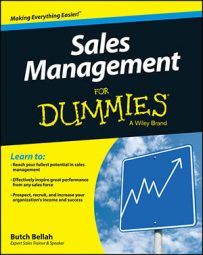Email has made communication for sales managers more convenient, efficient, and timely, but have we sacrificed clarity for that convenience. Email makes up the majority of written communication in any business and is something you need to be well versed in.
Perhaps more seriously than verbal discussions because there is a record of written communication.
Unfortunately, the ease with which you can send email leads some people to think quicker is better. It's not.
Remember: There's no crying (or laughing or joking or winking) in sales management emails
The biggest problem with email (or any written communication) is that there's no way in it to express the emotion you feel when you write your message. There's no sarcasm font on your computer. What may seem like a joke or wisecrack to you may be taken totally different by the person reading your message. An innocent, off-the-cuff comment can cause a lot of problems.
The one thing people know about email etiquette is that when you type in all caps, YOU ARE SCREAMING AT THEM!
Don't write emails like you talk. Eliminate all the slang terms and casual tone. Write like you're writing a formal business letter. Just because it's email doesn't mean it carries less weight. Start with your email message being very formal; you can always soften it a bit as you read through before you hit Send.
If you receive an email and think the writer is being less than professional or says something that makes you angry, stop, take a deep breath, and read it again. See if there's a chance the sender was trying to be funny or cute.
Adopt this professional email policy with everyone you communicate with including your salespeople, vendors, peers, and especially customers. Don't ruin a relationship because of a misunderstanding that could have (and should have) been avoided.
Re-read your sales management emails
If you've been using email for more than a month chances are you've had one of those panic-stricken moments when you scream at the computer when you realize you've sent something you shouldn't have or you notice an error after it's gone. Unfortunately, email doesn't come back.
You may have heard the old saying, "Measure twice, cut once" about being very sure of yourself before taking action. Email is the exact same way except it's "Read twice, send once."
These few tips, if followed, can save you some heartache, time, and potential embarrassment:
Don't put the recipient's address in until last: This is a great little trick. This prevents those "Oh no!" moments when you accidentally hit Send before you're ready. It's a great habit to develop and will save you aggravation often.
Read it aloud: Slow down and read it out loud. Don't rush through because you know what you wrote. Well, you know what you meant to write, but that may not be what's in the body of the email.
Check for spelling and grammar: Don't get so dependent on spell-check that you assume everything's okay if there are no red, squiggly lines under anything. If you have a word not recognized in your software's dictionary, make sure it's spelled correctly and then add it to the dictionary for future reference.
Grammar is also important. Don't send an email telling the customer, "Your going to love our product." Neither spell-check nor grammar check catches your instead of you're, but your customer will — and if he's like most people, it will drive him nuts.
Use cut and paste sparingly: Yes, it's easy to just cut and paste from one document to another, but be very careful.
Double, triple, and quadruple check for attachments: Certain email programs recognize the word attachment in the subject line and notify you before sending if nothing is attached.
If you can get in the habit of adding the attachment and then the recipient's address as the final two things before you send, you'll be miles ahead in your email communication.
Why reply all is a bad idea for sales managers
Seldom is it a good idea to hit Reply All without giving it some thought. Unless you're several emails into a lengthy discussion with several parties, most people don't recommend it at all.
Try to be the person in your company who starts not hitting Reply All and suggest others follow suit. You'll be amazed at how much useless email you don't receive anymore.
If the sender initiates the conversation and includes several people — especially some you don't know. You can respond only to the sender with a note in bold or otherwise highlighted, "I replied only to you, feel free to forward to the other recipients as you feel necessary."
If everyone would get in this habit, people would have far less email in their inbox. It's especially aggravating when phones ping, or email alerts sound for conversations between two or more people that have absolutely nothing to do with you.
After all, if you reply only to the sender, you can always go back to your Sent folder and forward that email to everyone else. But, after you hit Reply All, you can't reach through the screen and pull it back.

